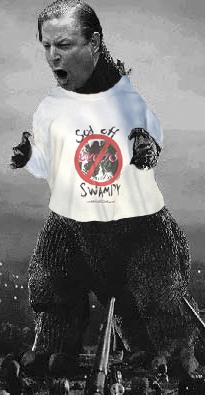NOW We Know the TRUE Meaning of
A government proposal to raise Italy’s legal age for buying alcohol from 16 to 18 is going down like a corked wine with bar owners, scientific experts and some critics in the very government that came up with the idea.
…Livia Turco, health minister, said the measure would align Italy with other European Union countries. In fact, the legal age for purchasing most or all types of alcohol in France, Germany and several smaller countries is 16, though it is 18 in the UK and 21 in the US.
…”It sends a repressive and prohibitionist message to young people, and it could have the opposite effect to that intended – making the abuse of alcoholic drinks more attractive,” said Gennaro Migliore, a communist legislator.
…“I wonder if it’s really true that you can change people’s lifestyles with prohibition,” said Lino Stoppani, Fipe’s president.
Many critics have pointed out that Italians learn to drink moderate amounts of wine or beer at a relatively young age – under 14 – because of the tradition of leisurely family meals at the weekend in restaurants.
…It is widely recognised in Italy, however, that the high level of traffic accidents is related to alcohol consumption. About 200 Italian teenagers die every year as a result of accidents involving drinking and driving.
Nevertheless, the budget’s proposals on alcohol seem in apparent conflict with the much more liberal approach that some government ministers are considering on drug use.
Paolo Ferrero, social solidarity minister, says he plans to reverse the existing law, passed by Italy’s former centre-right government, which made it a criminal offence to possess all but the smallest amounts of marijuana and cocaine.
Hmmm, beer or cocaine? Which would I rather have Ebola using? I think the best indicator on that score would be which is served at those long Sunday dinners. As for 200 teenagers killed in drinking related accidents ~ in my mind, that’s a pretty astonishingly low number considering the age at which you can legally begin quaffing. Judging by the American experience when it was 18 to drink, you’d think there’d be slaughter on every road in Italy four times a day with tanked 16 year olds.

that’s a pretty astonishingly low number
Expecially the way Italians drive.
I mean, sheesh! Check out THIS USA stat. for comparison:
And check out the WIKI entry on how MADD’s saved us.
Everytime I stub my toe or trip over the labradork after 6 p.m. is alchohol related I guess.
I’m stunned MADD hasn’t come swooping in like avenging harpies and had that expunged or changed,
Everytime I stub my toe or trip over the labradork after 6 p.m. is alchohol related I guess.
Well, considering your inbibing patterns, yes it is.
(This from Mister “It’s noon somewhere in the world…”)